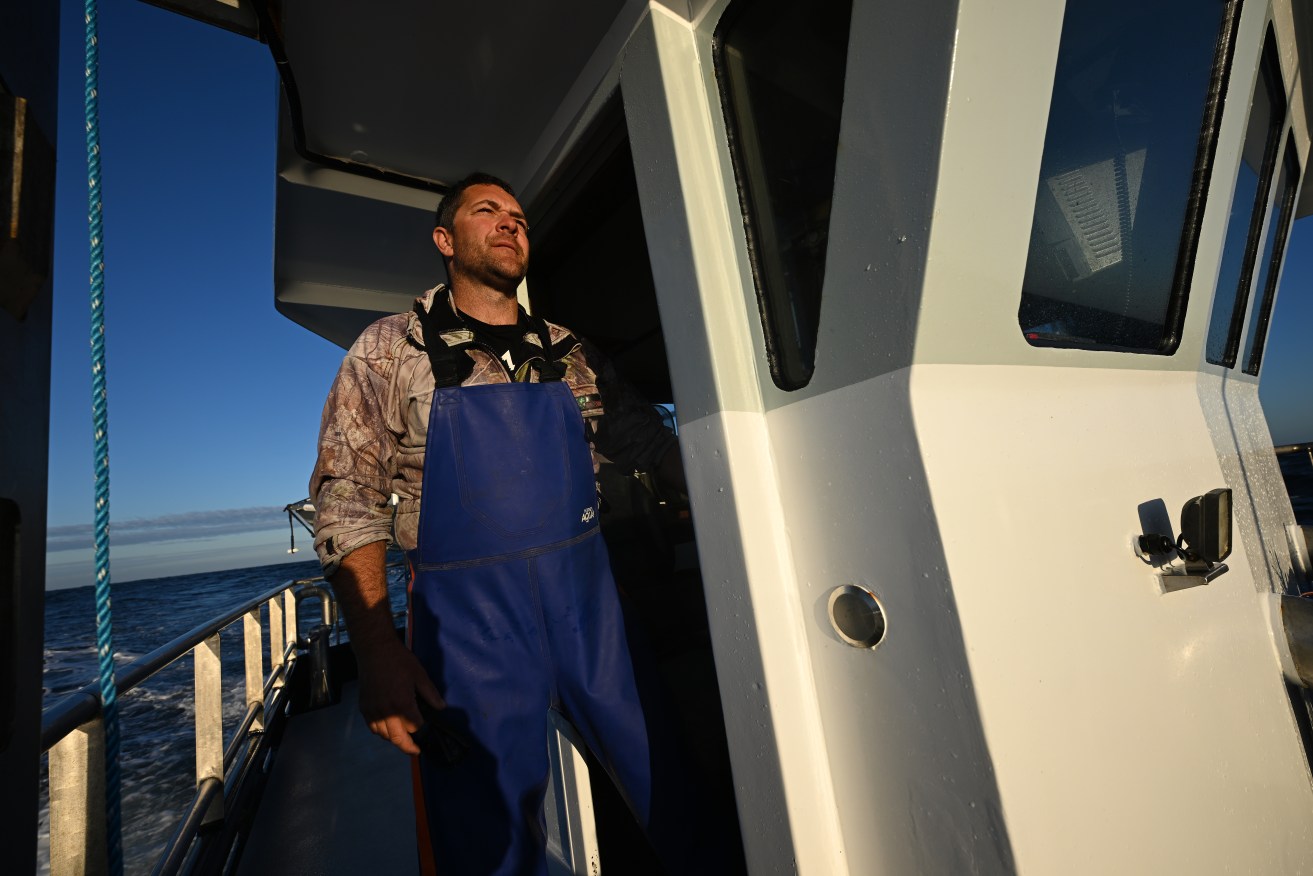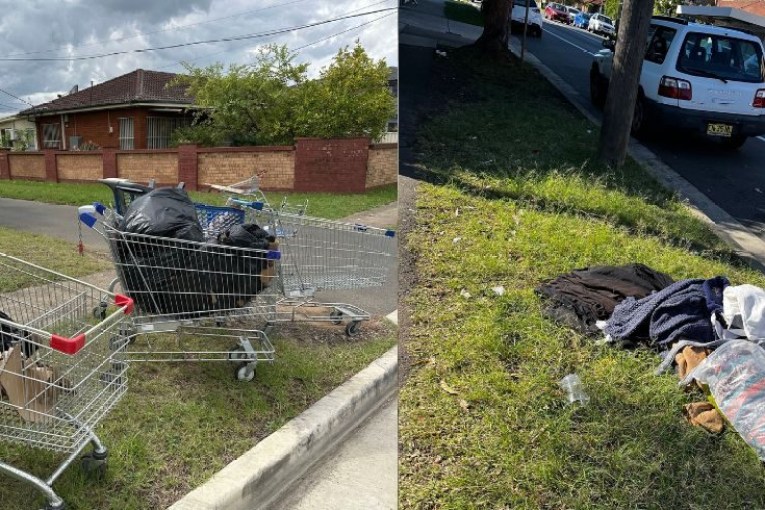For lobstermen, Bass Strait seismic testing is the sound of doom

Bass Strait lobsterman Andrew Smith gazes into an uncertain future and wonders if the quest for fossil fuels will end the life he loves. Photo: AAP
Andrew Smith wants to keep crayfishing long enough to put his children through school, but plans for further seismic testing off his Bass Strait home of King Island have him worried.
Energy data company TGS wants to survey for gas across some 4.5 million hectares in the Otway Basin, which are Commonwealth waters between Tasmania and Victoria.
Under the plan, a single vessel will tow up to 14 seismic streamers eight to 10km long, operating using either double or triple discharges over a period of up to 400 days.
The operational area, 38km from the closest land, includes water depths from 115m to about 5.6km.
Seismic testing has been shown to negatively impact whales as well as other marine life.
Mr Smith, who has been “wheel in hand” for 13 years, described seismic activity as not ideal.
“It can’t not have an impact on the smaller stuff (in the ocean),” he said. “I think it’s going to be years before we see the direct effects.”
Lobster central
He said the waters were a “larvae corridor” for rock lobsters, which have a 15- to 18-month larvae cycle.
“The uncertainties (about the impacts) are concerning for us,” he said, adding there was an industry desire for greater research.
“The more we understand … the more we can put arguments forward, or have comfort that the testing isn’t impacting.”
University of Tasmania senior research fellow Ryan Day was involved in a study published in June looking at the effects of seismic surveys on octopuses and larval stages of rock lobster.
Dr Day said the righting ability of lobsters during their “miniature” stage, when they start living on the sea floor, was impacted by testing.
“With the adults we found (the righting ability) was impaired, with the juveniles we also found a similar level of impairment,” he said.
“That tells us the mechano-sensory system – their ability to detect gravity and motion has been affected.
“With adults … we found no sign of recovery. In these juvenile lobsters the ones exposed at very close range also showed no signs of recovery.”
Neglectful octopus mothers
Dr Day said the study showed seismic activity was not fatal for octopuses.
However, he said there were noted behavioural impacts including impaired feeding for males early after exposure, something that recovered over time.
Females octopus showed reduced maternal care and were more likely to leave their eggs and not take care of them.
“All the effects we’ve measured have been on animals we’ve been holding in the lab,” Dr Day said.
“We don’t know what that means out in the wild, what the ecological impacts are. There are a lot more questions than answers at this point.”
The National Offshore Petroleum Safety and Environmental Management Authority (NOPSEMA) is assessing the TGS seismic testing proposal.

Baby and adult crayfish alike show adverse reactions to sonic testing, researchers have found.
A spokesman said there was an iterative assessment process in which the proponents may be required to amend their submissions. The next “decision point” is expected in March.
“NOPSEMA takes into account the best available science on the effects of noise on whales and other marine species,” it said in a statement.
“(We) will ensure that all offshore petroleum activities are managed to be consistent with relevant recovery plans for potentially impacted species.”
Seismic testing is not new to Australian waters, with more than 2000 surveys conducted since the 1960s, including hundreds off the southern coast including Bass Strait.
‘No evidence’
Simon Molyneux, who represents the energy geoscience industry’s global trade association EnerGeo Alliance, said there had been “no evidence” of the impacts many opponents claimed as likely.
“The seismic industry has a long and strong track record of operating safely, sustainably and successfully in Australian waters,” he said.
“Undertaking a seismic survey is a highly regulated activity.
“In order for the regulator to allow a survey to take place a survey must meet the criteria of reducing risk as low as reasonably practical.”
He said recent research, including by the Australian Institute of Marine Science on demersal fishes and pearl oysters, showed there was no evidence seismic surveys had population impacts on marine life.
Mr Molyneux said wildlife monitoring was undertaken by people aboard survey vessels.
“When these individuals observe wildlife that is subject to the controls, for example whales and dolphins, they have the power to shut down survey activity,” he said.
- This AAP article was made possible with the support of the Meta Australian News Fund and The Walkley Foundation.








